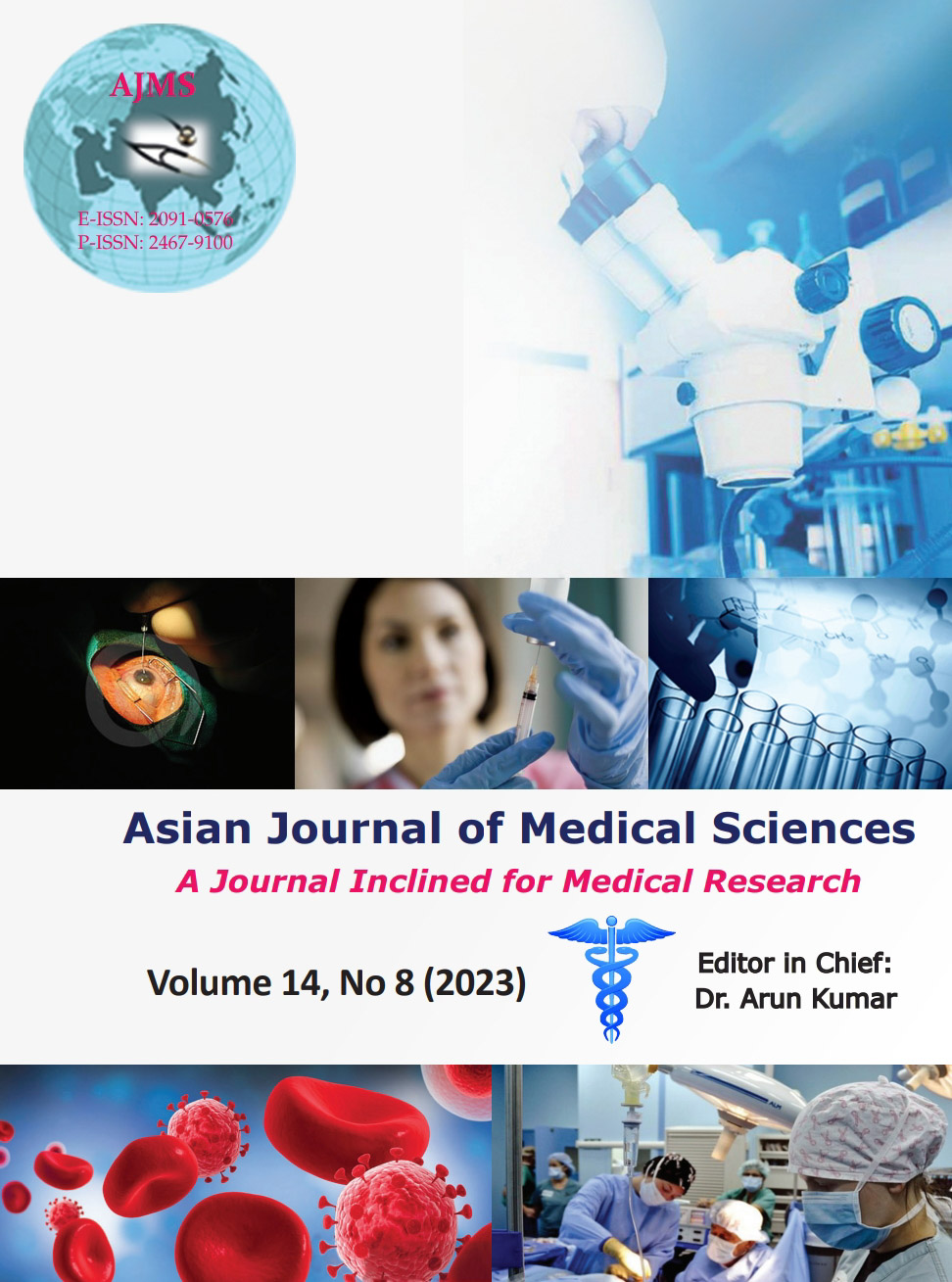To study risk factors and biochemical profile of diabetic ketoacidosis patients with special emphasis on serum amylase
Keywords:
Clinical and biochemical profile; Diabetic ketoacidosis; Mortality and morbidityAbstract
Background: Diabetes mellitus (DM) is a complex endocrinological disorder with altered metabolism of blood glucose. Diabetic ketoacidosis (DKA) is one of the life-threatening acute complications of DM that mainly occurs in type 1 diabetes patients, as well as in some patients with type 2 diabetes. The mortality rate associated with DKA depends on the experience of the treating hospital in dealing with this condition; thus, it is critical that patients detect DKA and get medical help as soon as possible.
Aims and Objectives: To study risk factors for DKA, clinical and biochemical profile of DKA patients. Correlation between serum amylase level, serum bicarbonate level and mean duration of hospital stay.
Materials and Methods: A cross-sectional analytical study was carried out on 100 DKA patients in the Department of Medicine, SGMH Rewa, Madhya Pradesh from January 2021 to June 2022. The data extracted included clinical presentation, precipitating factors, laboratory profile, complications, and hospitalization outcomes.
Results: Of the 100 patients admitted for DKA; 70 had type 2 diabetes (70%) and 30 (30%) were type I diabetes. The average age at the time of presentation was 48.61±19.59 years. The commonest precipitating factor was infection (38%) followed by other factors (62%). The most common clinical features at the time of presentation were altered sensorium, fever, vomiting, polyuria, polydipsia, weakness, lethargy, myalgia, headache, anorexia, abdominal pain, and orthopnea. The values for RBS, HCO3, and pH were 525.0±62.4, 12.6±2.69, and 7.14±0.31, respectively. There was no significant difference in clinical and biochemical profile of patients with type 1 and type 2 diabetes. The mortality rate was 3% and factors found to be significant predictors were comorbid condition, severity of mental status, severity of dehydration, RBS at the time of presentation, and severe acidosis.
Conclusion: The most common precipitating factors are infection and omission of insulin or irregular treatment. The most common clinical features at the time of presentation are nausea, vomiting, abdominal pain, headache, and dehydration. There is no significant difference in the clinical and biochemical profile of patients with type 1 and type 2 diabetes. The mortality rate in DKA is 3% and the most notable predictors of poor prognosis are; severity of altered sensorium, severity of comorbid condition, severe dehydration, severe acidosis, and identification and treatment of precipitating factors are more important. Patient education plays a crucial role in the prevention of DKA.
Downloads
Downloads
Published
How to Cite
Issue
Section
License
Copyright (c) 2023 Asian Journal of Medical Sciences

This work is licensed under a Creative Commons Attribution-NonCommercial 4.0 International License.
Authors who publish with this journal agree to the following terms:
- The journal holds copyright and publishes the work under a Creative Commons CC-BY-NC license that permits use, distribution and reprduction in any medium, provided the original work is properly cited and is not used for commercial purposes. The journal should be recognised as the original publisher of this work.
- Authors are able to enter into separate, additional contractual arrangements for the non-exclusive distribution of the journal's published version of the work (e.g., post it to an institutional repository or publish it in a book), with an acknowledgement of its initial publication in this journal.
- Authors are permitted and encouraged to post their work online (e.g., in institutional repositories or on their website) prior to and during the submission process, as it can lead to productive exchanges, as well as earlier and greater citation of published work (See The Effect of Open Access).




